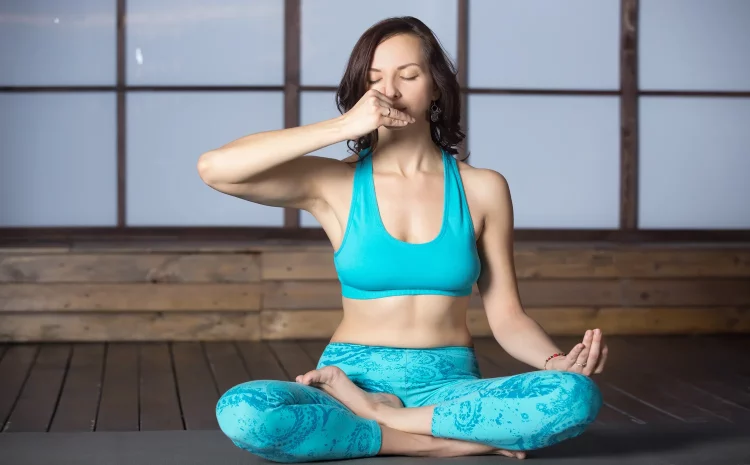Every second, without thinking, you breathe. It’s the first thing you do when you’re born and the last when you leave this world. Yet, despite being our most vital biological function, breathing is often the most overlooked aspect of health and wellness. But what if the way you breathe could actually change your life? What if simple, daily breathing techniques could ease anxiety, sharpen your focus, improve your posture, boost your immune system, and even help you sleep better? The truth is: they can. Learning how to breathe properly is one of the most powerful yet underutilized tools in our quest for physical, emotional, and mental balance. In this article, we’ll explore how breathing right—intentionally and mindfully—can transform the way you live, one breath at a time.
The Science of Breathing: More Than Just In and Out
Most people assume breathing is just an automatic bodily process. And it is—to an extent. Your brainstem ensures you take in enough oxygen to survive. But the quality of your breath—the depth, rhythm, and awareness behind it—determines how well your body and mind function. When we breathe shallowly from the chest, we signal our nervous system that we’re in a state of stress. Over time, this contributes to chronic anxiety, poor digestion, low energy, and even poor posture. On the flip side, slow, deep, diaphragmatic breathing activates the parasympathetic nervous system—our “rest and digest” mode—which promotes healing, relaxation, and clarity. Controlled breathing enhances oxygen delivery, helps expel toxins through carbon dioxide, regulates heart rate, and optimizes the body’s stress response. It’s not just air—it’s medicine.
Modern Life and Dysfunctional Breathing Patterns
Thanks to long hours at desks, constant screen use, and high-stress environments, many people unknowingly adopt dysfunctional breathing patterns. These include shallow chest breathing, breath-holding, or rapid over-breathing. These patterns trick the brain into thinking we’re under threat, even when we’re just answering emails or commuting. The result? Chronic stress, fatigue, poor sleep, and irritability. Even physical symptoms like headaches, tight shoulders, and poor digestion can trace back to poor breathing habits. Breathing dysfunction can become your default, until you consciously retrain your system to breathe correctly again. But the good news is that awareness and practice can reverse this quickly.
Diaphragmatic Breathing: Your Inner Reset Button
Also known as belly breathing, diaphragmatic breathing is the cornerstone of proper breathwork. This technique involves fully engaging the diaphragm—a dome-shaped muscle beneath your lungs. When done correctly, the abdomen rises and falls with each inhale and exhale, while the chest remains relatively still. This style of breathing calms the nervous system, lowers blood pressure, and increases oxygen flow to the brain. It’s also an excellent way to interrupt spiraling thoughts or panic. Just a few minutes of diaphragmatic breathing daily can rewire your stress response. To practice: Sit or lie down in a comfortable position. Place one hand on your chest and one on your belly. Inhale slowly through your nose, feeling your belly rise. Exhale slowly through your mouth, feeling your belly fall. Repeat for five to ten minutes.
Box Breathing: A Tool for Mental Clarity
Used by Navy SEALs, CEOs, and therapists alike, box breathing is a simple yet powerful technique that enhances concentration and relieves anxiety. The method involves inhaling, holding, exhaling, and holding again—each phase for the same count. Typically, people start with four seconds per phase. Inhale for four, hold for four, exhale for four, hold for four. This practice steadies the mind, strengthens focus, and balances the autonomic nervous system. It’s an excellent technique to use before public speaking, difficult conversations, or sleep. By creating a predictable rhythm, box breathing calms the chaos inside your head and brings you back to the present moment.
Alternate Nostril Breathing: Balancing Energy
Originating from ancient yogic practices, alternate nostril breathing (nadi shodhana) is a technique designed to balance the left and right hemispheres of the brain. In yogic philosophy, the left nostril is linked to calming, lunar energy, while the right nostril corresponds to energizing, solar energy. This technique can be both energizing and calming, depending on when and how it’s used. Sit comfortably. Use your right thumb to close your right nostril. Inhale through your left. Close the left with your ring finger, release the right, and exhale. Inhale through the right, close it, and exhale through the left. That’s one cycle. Practice five to ten cycles in a sitting. This technique promotes mental clarity, improves lung function, and is especially helpful in times of emotional imbalance or mental fog.
4-7-8 Breathing: Your Bedtime Ally
If you struggle with sleep, this one’s for you. The 4-7-8 breathing method is a powerful pattern to help calm the nervous system and ease you into slumber. Created by Dr. Andrew Weil, it involves inhaling through the nose for four seconds, holding the breath for seven seconds, and exhaling slowly through the mouth for eight seconds. This technique helps reduce anxiety, lower heart rate, and shift the body into a relaxed state. The elongated exhale is key—it signals safety to your nervous system, telling your brain it’s okay to let go. Many people report falling asleep in minutes after practicing this for a few nights.

Breath and Posture: The Hidden Connection
Your breath and your posture are intimately connected. When you slouch—shoulders rounded, chest collapsed—your lungs can’t fully expand. This leads to shallow, inefficient breathing. Conversely, standing or sitting with an upright spine, relaxed shoulders, and open chest allows for deep, full breaths that energize your entire body. Try this: sit with poor posture and attempt a deep breath. Then straighten your spine, lift your chest slightly, and breathe again. The difference is immediate. Proper posture doesn’t just make you look more confident—it supports better breathing, improved circulation, and even greater core stability. Aligning your breath with posture makes every breath more effective, and every movement more intentional.
Breath and Emotions: Regulate from the Inside Out
One of the most profound impacts of breathwork is emotional regulation. Emotions like fear, anger, joy, and sadness are accompanied by distinct breathing patterns. By consciously changing your breath, you can shift your emotional state. This is why breathwork is often used in therapy, trauma recovery, and mindfulness practices. When you feel anxious, taking slow, deliberate breaths sends feedback to the brain that you are safe. This breaks the loop of panic and helps you regain control. Regular breathwork practice creates space between stimulus and response, empowering you to navigate challenges with calm and clarity rather than reactivity.
Breath and Physical Performance: Fueling Strength
Athletes and fitness enthusiasts are increasingly turning to breath training to improve performance. Breath control enhances endurance, oxygen efficiency, and recovery. Techniques like nasal breathing during workouts help improve carbon dioxide tolerance and reduce fatigue. Some elite trainers also incorporate breath holds and breath ladders to challenge the cardiovascular system. Even during yoga, Pilates, or strength training, syncing movement with breath increases control, power, and presence. Breathing right isn’t just about relaxation—it’s about performance optimization, too. Whether you’re lifting weights or running a marathon, breath is your most reliable teammate.
Daily Breathwork Routine: 10 Minutes to Transform
You don’t need an hour-long breathwork class to see benefits. A simple 10-minute daily practice can yield significant improvements in mood, focus, and energy. Here’s a suggested routine:
- Minute 1–2: Diaphragmatic breathing (slow belly breaths)
- Minute 3–4: Box breathing (4-4-4-4)
- Minute 5–6: Alternate nostril breathing
- Minute 7–8: 4-7-8 breathing
- Minute 9–10: Sit quietly and observe your natural breath, eyes closed
Consistency is more important than duration. Think of this as brushing your nervous system—daily hygiene for your mind and body. Set a reminder, choose a quiet space, and give yourself permission to breathe deeply and fully, no matter what the day holds.
Breathwork as a Lifelong Practice
Unlike trendy fitness regimens or restrictive diets, breathwork is timeless and universally accessible. You don’t need equipment, apps, or expensive memberships. You carry the tool with you everywhere—your lungs. Whether you’re 8 or 80, breathwork adapts to your life stage, goals, and stress levels. It becomes a trusted ritual you can return to at any moment: in traffic, before a presentation, or during grief. The breath becomes your compass—anchoring you in the present and guiding you gently through life’s storms.
Conclusion: A Breath-Fueled Life
So can breathing right change your life? Absolutely. When you breathe with intention, you access a hidden lever that influences your nervous system, mental clarity, physical energy, emotional regulation, and even your longevity. Breath is the bridge between body and mind. And learning to use it well is one of the most empowering acts of self-care you can choose. In a world that demands so much from us, the breath offers something radical: a moment of stillness, a surge of energy, a gateway to inner peace. With every conscious inhale and every mindful exhale, you rewrite your story—not in grand gestures, but in the quiet power of presence. So pause. Breathe. And begin again.

















































